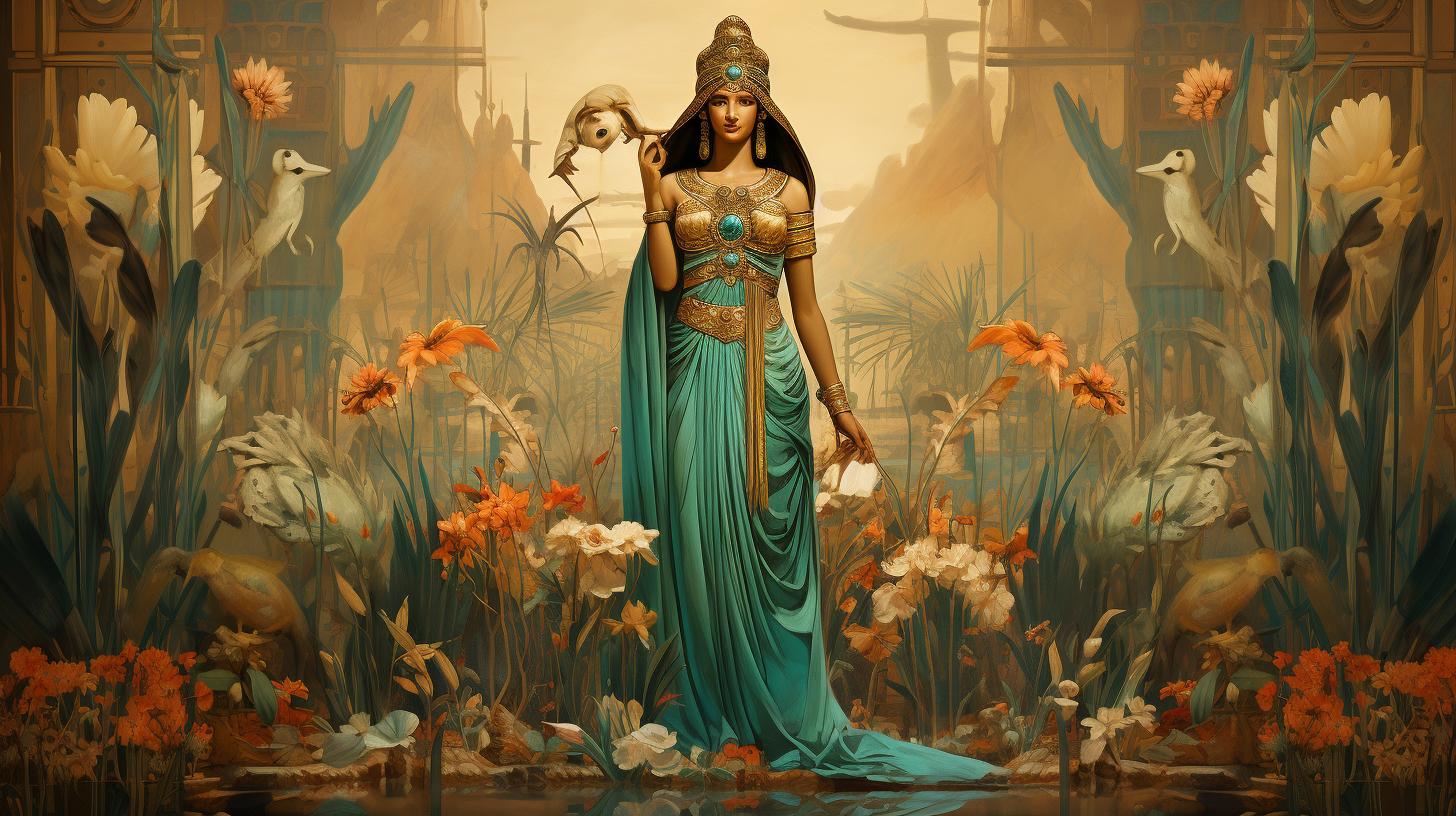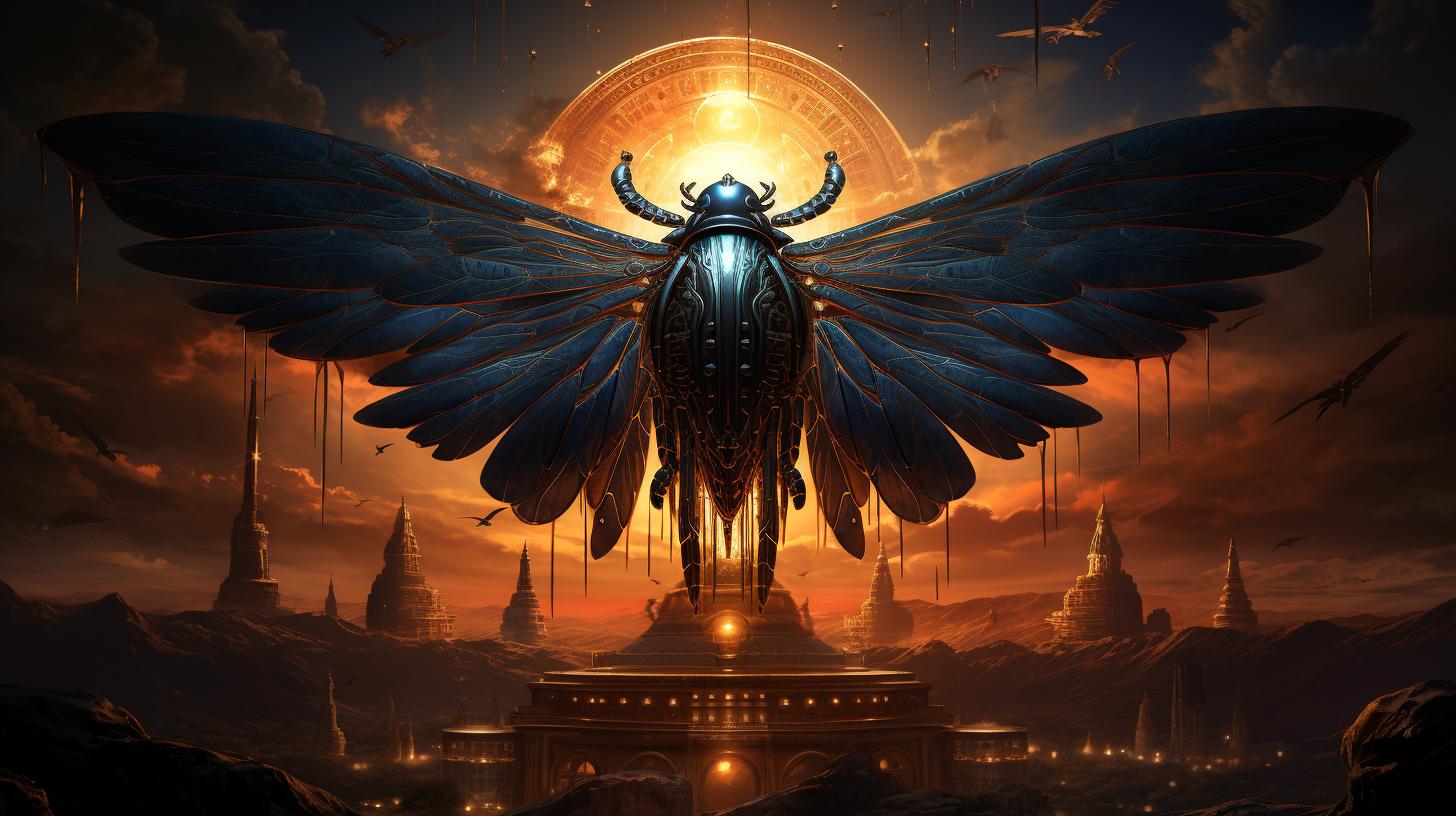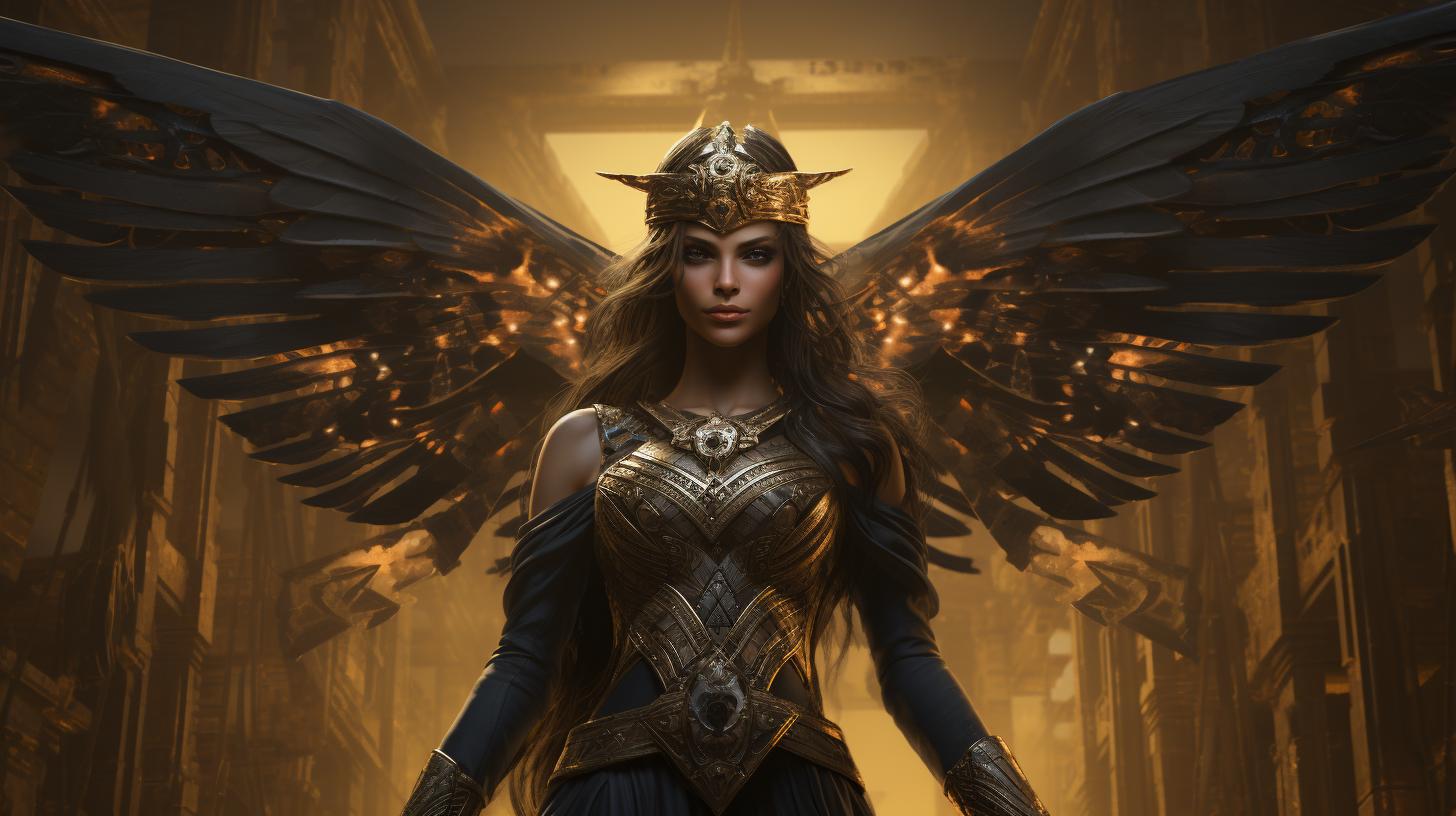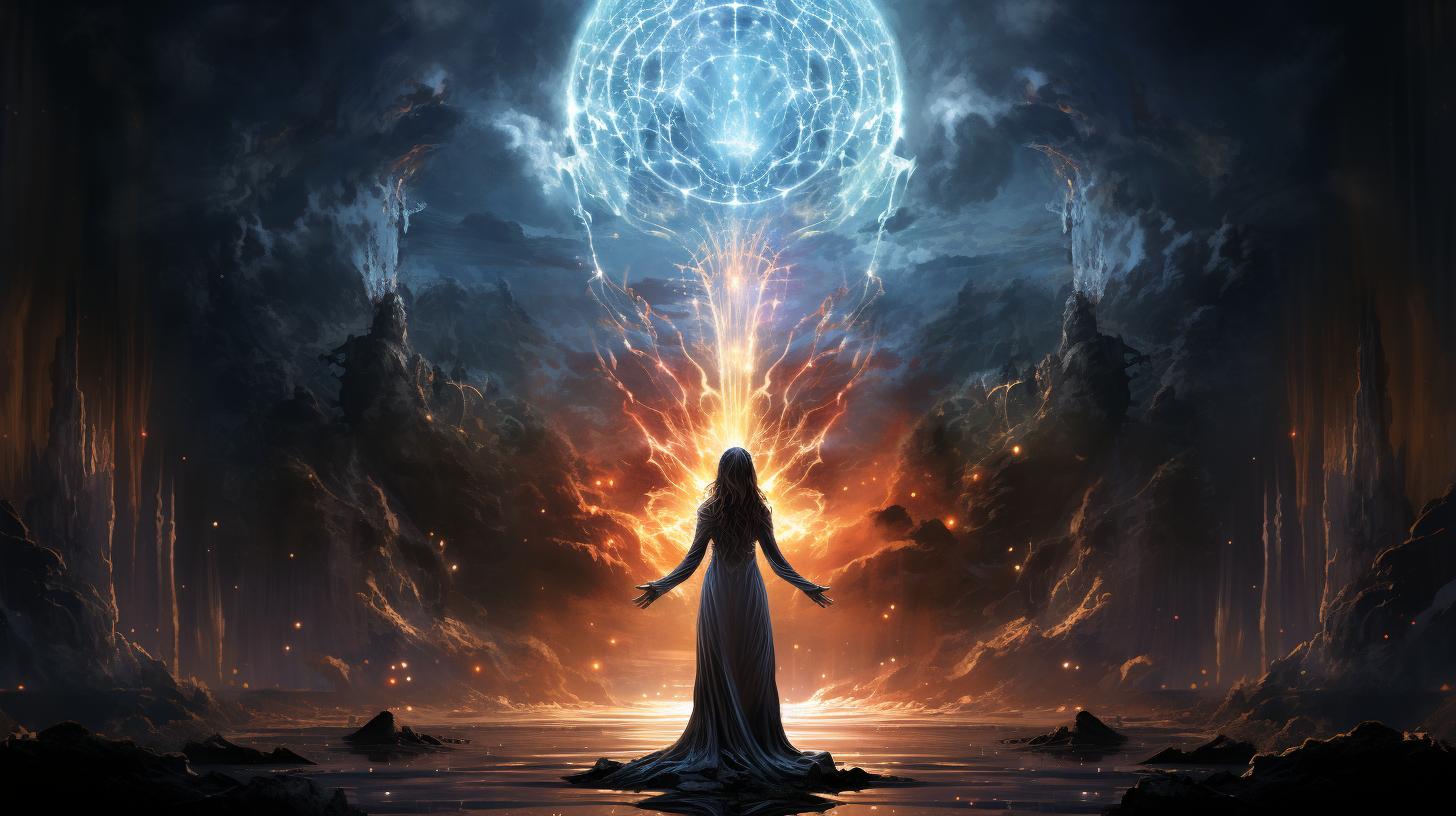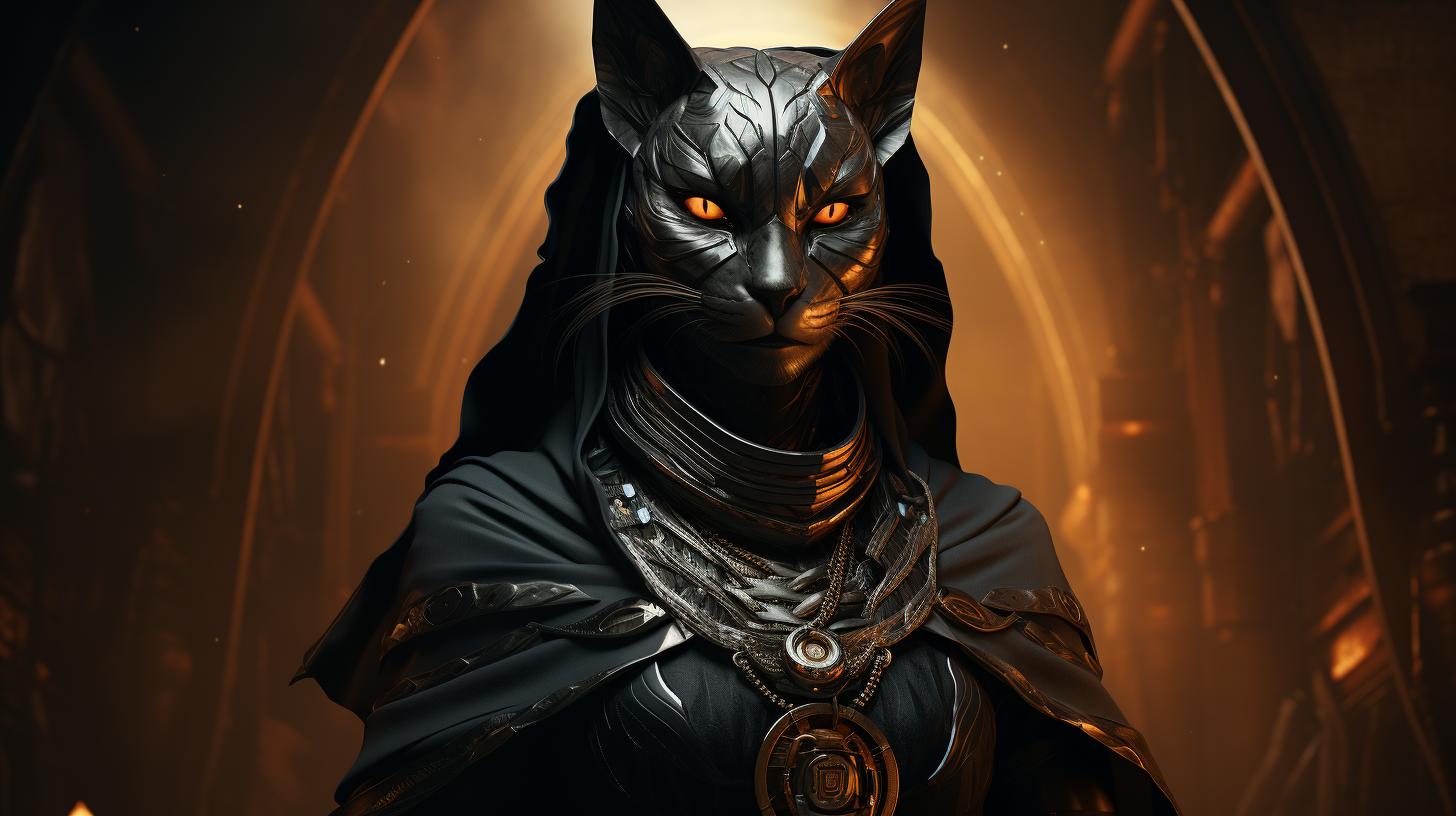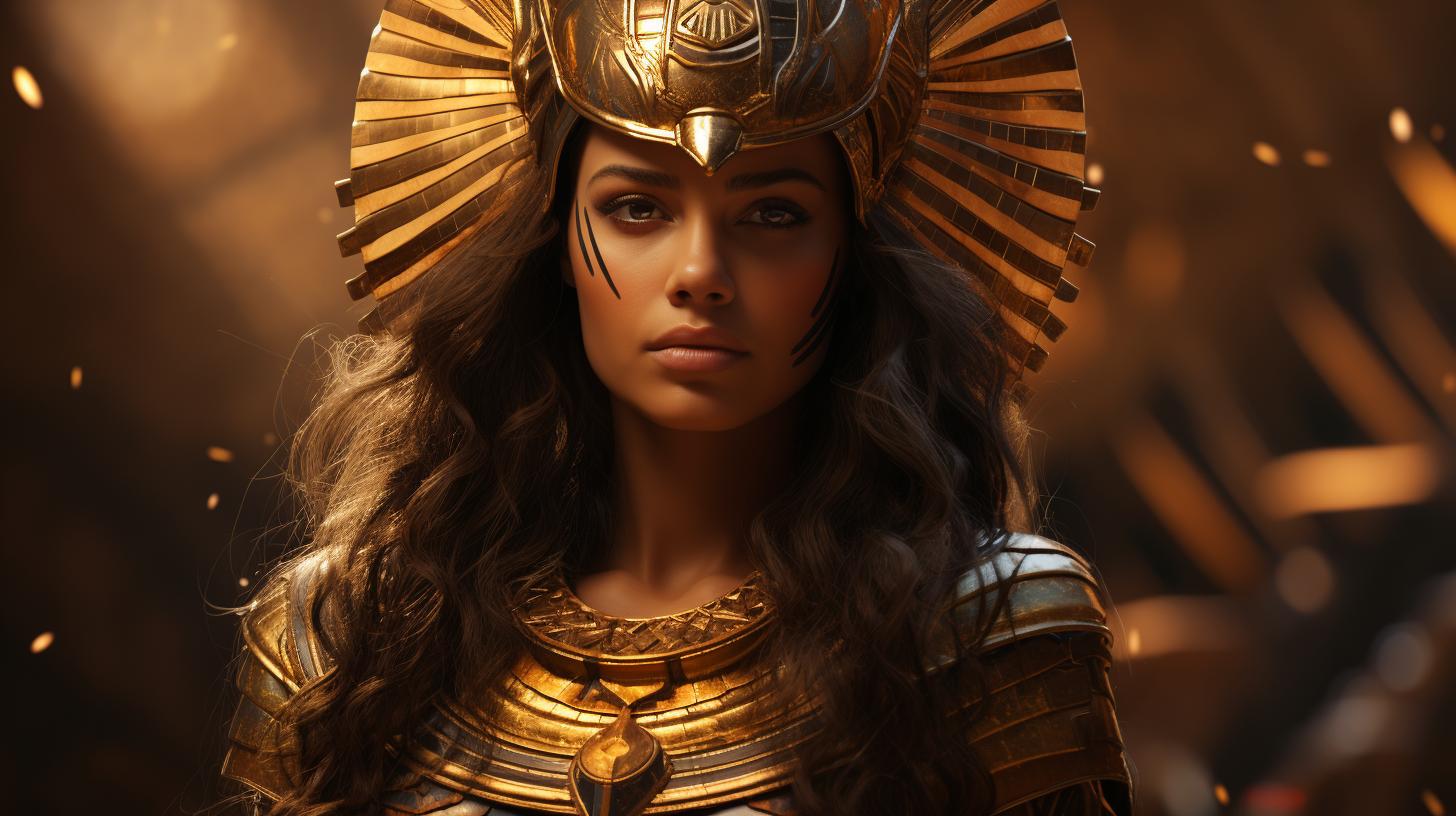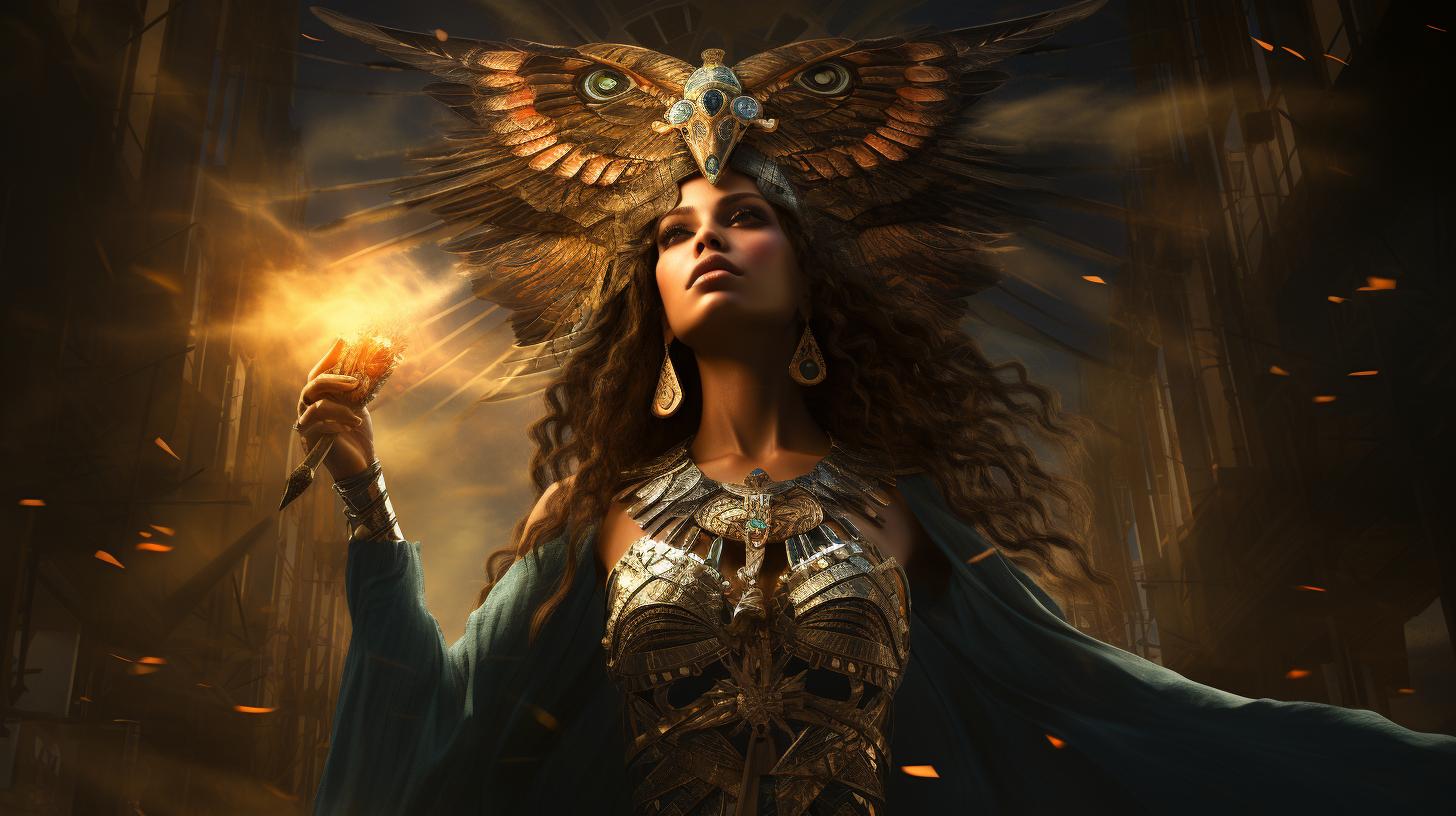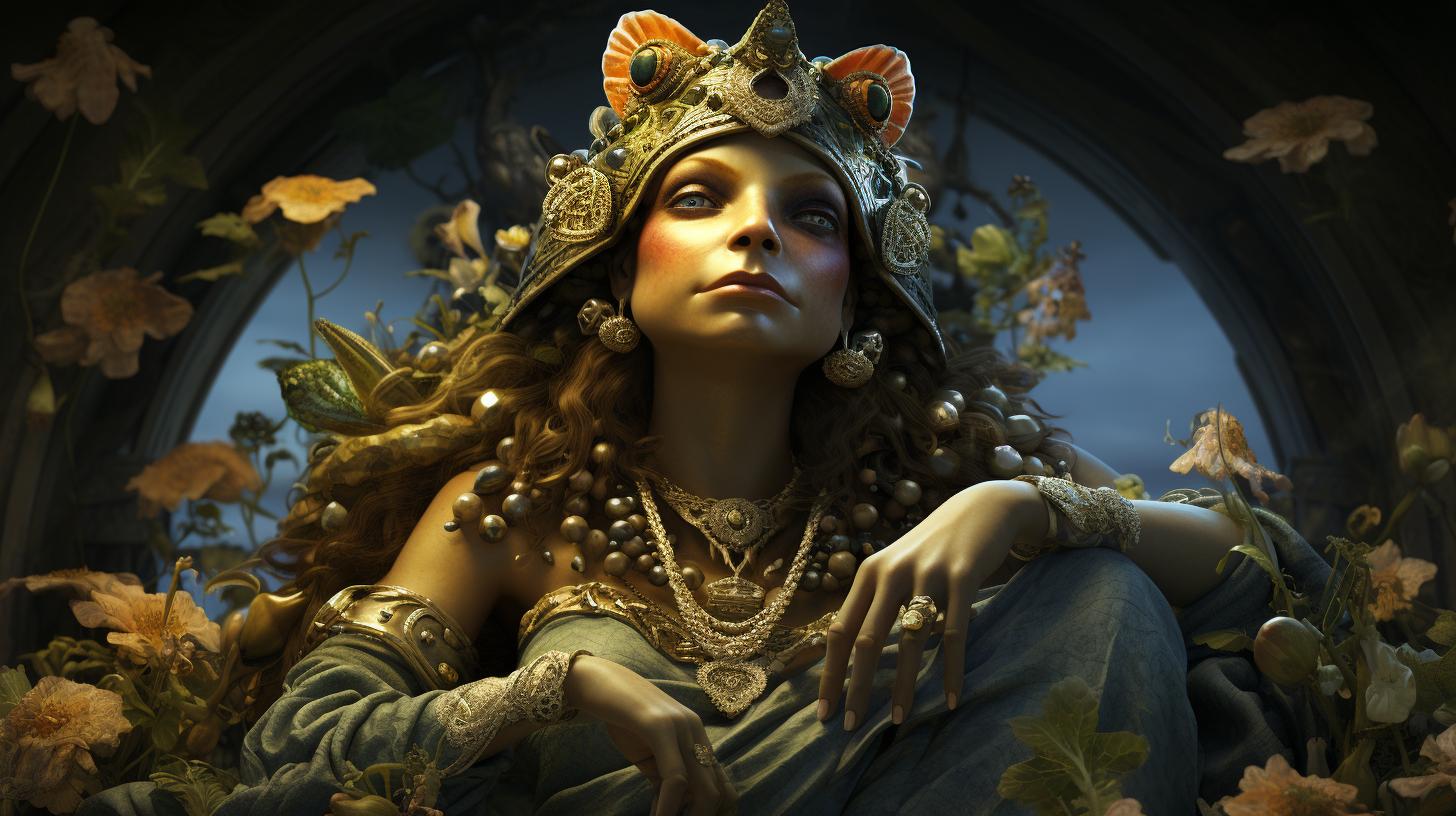Ancient Egyptian Cobra Goddess Wadjet: Unveiling the Secrets of Egypt’s Enigmatic Deity
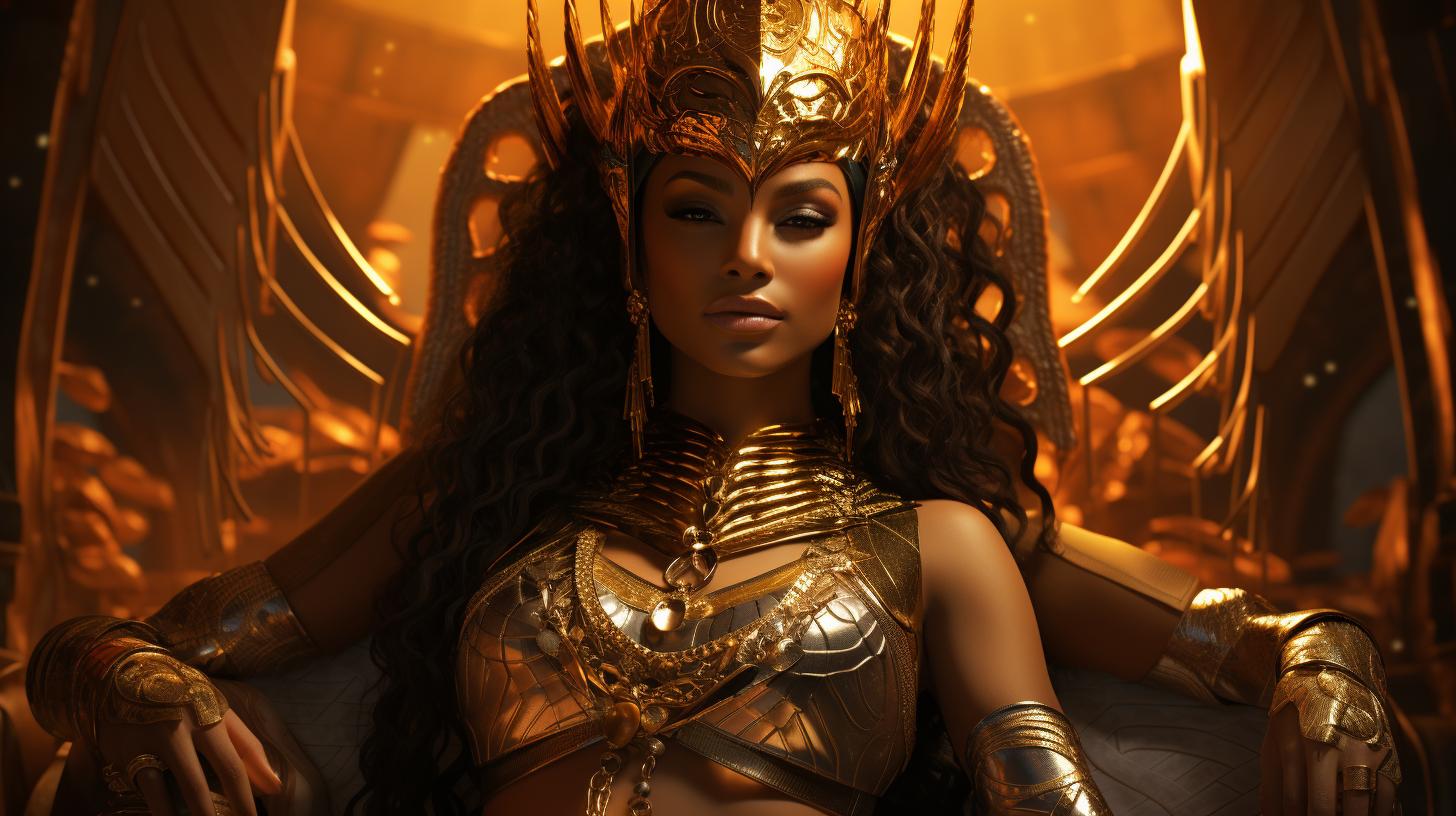
The ancient Egyptian cobra goddess Wadjet played a significant role in the mythology and religious beliefs of ancient Egypt. Also known as the protector of Lower Egypt, Wadjet was often depicted as a cobra coiled around a papyrus stem.
She was closely associated with the Eye of Ra, symbolizing protection and power. Wadjet’s mythical connections include her role as the caretaker of the infant god Horus, aiding his mother Isis in keeping him safe from Set.
Through her representation in art and temples, Wadjet’s influence endured throughout Egyptian history.
Origins of Wadjet: Pre-Dynastic Era and Buto
The ancient Egyptian cobra goddess Wadjet originated during the Pre-Dynastic era as the deity of the city of Dep, also known as Buto. She held significant importance as the protector and patroness of Baja Egypt, represented by a coiled cobra.
Buto, the capital of the sixth nome of Lower Egypt, was the center of worship for Wadjet.
Wadjet’s influence expanded beyond the local region, eventually becoming the joint protector and patroness of all Egypt after the unification of Upper and Lower Egypt. As the protector of the pharaohs, she was often depicted alongside the vulture goddess Nekhbet, representing the full reign and dominion of the king over Egypt.
Her association with the land and her role as the caretaker of the infant god Horus, under the guidance of his mother Isis, further solidified her importance.
Wadjet played a vital role in safeguarding Horus from his treacherous uncle, Set, within the marshes of the Nile Delta. This ancient Egyptian myth bears remarkable similarities to the Greek tale of Leto and Apollo on the island of Delos.
The exquisite imagery of a cobra coiled around a papyrus stem, known as an uraeus, became the iconic representation of Wadjet. It graced the crowns worn by pharaohs and symbolized their reigning authority.
Additionally, Wadjet’s symbol, a hieroglyphic eye, adorned various religious depictions, emphasizing her role as a powerful guardian and protector.
Wadjet’s Role as the Protector of Lower Egypt
Wadjet, the ancient Egyptian cobra goddess, held a significant role as the protector of Lower Egypt. She was revered as the patron deity of the region and safeguarded the land and its people.
Depicted as a coiled cobra on a papyrus stem, her presence symbolized power and authority.
Wadjet’s influence extended beyond royalty, as she was also regarded as a protector of women during childbirth.
Her association with the Eye of Ra further exemplified her role as a watchful guardian. The Eye of Ra represented the vigilance and protection of the sun god, and Wadjet embodied these qualities in her divine form.
Throughout ancient Egyptian history, Wadjet’s image was prominently featured in temples and religious iconography, emphasizing her significance in society. Her presence and influence in Lower Egypt fortify her status as a revered and respected goddess in the pantheon of ancient Egyptian deities.
Wadjet’s Association with the Eye of Ra and Symbolism
Wadjet, the ancient Egyptian cobra goddess, has a deep connection with the Eye of Ra, a symbol of protection and power. She embodies the fierce and watchful nature of the cobra, representing the divine gaze and royal authority.
The Eye of Ra, often depicted as a Udjat eye, is a symbol of the sun god’s all-seeing vision, casting his watchful eye over the land.
Wadjet’s association with the Eye of Ra extends beyond mere symbolism.
As the embodiment of the eye, she offers protection against evil and chaos, maintaining order and balance in the world. Her serpent form signifies her ability to strike against those who threaten the cosmic order, defending the pharaoh and the land of Egypt.
This powerful symbol of Wadjet became closely linked with pharaonic rule and was often incorporated into royal regalia. The uraeus, with its upright cobra, perched upon the ruler’s forehead, symbolized Wadjet’s divine protection and the pharaoh’s connection to the gods.
- Wadjet’s role as the guardian of the Eye of Ra
- Her connection to the sun god’s watchful vision
- Protecting the pharaoh and maintaining cosmic order
- The significance of the serpent form as a symbol of power
- Integration of the uraeus into royal regalia
Through her association with the Eye of Ra, Wadjet embodies not only the power of the cobra but also the divine protection and authority bestowed upon the pharaohs of ancient Egypt.
Wadjet’s Mythological Connections and Influence
Wadjet, the ancient Egyptian cobra goddess, possessed deep mythological connections and exerted significant influence in the Egyptian pantheon. One prominent aspect of her mythology is her role as the protector of Lower Egypt, alongside the vulture goddess Nekhbet, symbolizing the reign of the pharaoh over the entire kingdom.
Another captivating myth involves Wadjet’s maternal role in safeguarding the god Horus, assisting his mother Isis in shielding him from the treacherous Set. This narrative, akin to the Greek myth of Leto and Apollo, provided a basis for the later identification of Wadjet with Leto.
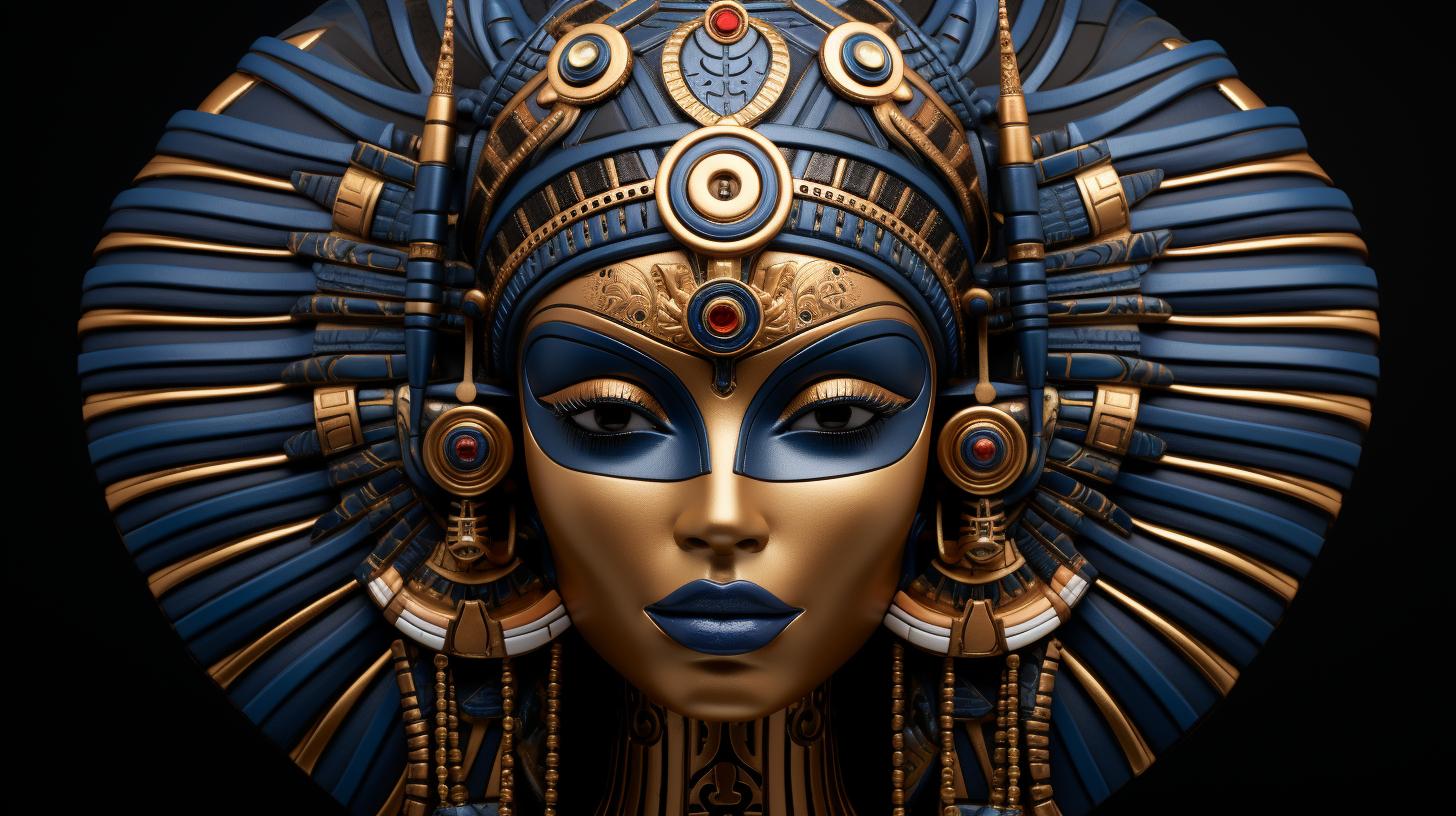
Her association with Horus cemented her status as a nurturer and safeguarder.
Beyond her mythological connections, Wadjet exerted influence through her symbolic representation. The uraeus, the upright cobra crown, became an iconic symbol of royalty, adorning the heads of pharaohs as a mark of their power and protection.
Wadjet’s presence in artwork and hieroglyphs showcased her importance in the religious and cultural fabric of ancient Egypt.
Wadjet’s Role as a Nurturer and Protector of Horus
Wadjet, the ancient Egyptian cobra goddess, played a crucial role as the nurturer and protector of Horus, the young god. According to mythology, she acted as the caretaker of Horus, assisting his mother Isis in safeguarding him from the treacherous schemes of his uncle, Set.
Wadjet’s dedication to the well-being of Horus symbolized her maternal instincts and her commitment to ensuring the continued prosperity and stability of the Egyptian kingdom. Her protective nature extended to her position as the protector of kings, women in childbirth, and the entire land of Egypt.
As the goddess associated with the earth, Wadjet was often depicted as a woman with a snake’s head or simply as a cobra. This representation emphasized her connection to the natural world and her ability to offer guidance and protection.
The significance of Wadjet’s role as a nurturer and protector of Horus cannot be overstated. It underlines her importance as a deity who actively participated in the affairs of both gods and mortals, ensuring the well-being and harmony of the Egyptian society.
In monuments, hieroglyphs, and artistic depictions, Wadjet’s presence alongside Horus highlights her role as a powerful and compassionate goddess, dedicated to safeguarding the divine order and the prosperity of the Egyptian people.
Wadjet’s Representation in Art and Hieroglyphs
In ancient Egyptian art, Wadjet was often depicted in various forms, reflecting her multifaceted nature and significance. One common representation was that of a woman with a serpent’s head, emphasizing her association with snakes and her protective role.
Another depiction showed Wadjet as a woman wearing the uraeus, the symbol of royalty, symbolizing her power and authority.
Wadjet’s image could also be found as a serpent coiled around a papyrus stem, considered the earliest representation of a snake entwined around a symbol of authority. Her presence in this form conveyed her connection to the land and fertility, as papyrus was a vital plant in Egyptian culture.
Additionally, Wadjet was occasionally portrayed with the head of a lion, representing her fierce and protective nature. This composite image highlighted her role as a defender of the pharaoh and the land of Egypt.
Notably, Wadjet’s representation within hieroglyphs was crucial in religious and symbolic contexts. Her hieroglyph, resembling a cobra, was frequently included in religious imagery and temple inscriptions, serving as a visual representation of her divine presence and protection.
The artistic representations of Wadjet in ancient Egypt reflected her diverse attributes and significance as a guardian deity. Whether as a serpent, a lion-headed figure, or a hieroglyph, her image symbolized protection, power, and the divine connection between the pharaoh and the gods.
Wadjet’s Relationship with Nekhbet and Other Deities
Wadjet, the ancient Egyptian cobra goddess, had a close relationship with Nekhbet, the deity associated with Upper Egypt. Together, they formed a powerful duo as the protective guardians of the pharaoh and symbolized the unity of the two lands of Egypt.
Nekhbet, often depicted as a white vulture, represented the south, while Wadjet represented the north as a coiled cobra.
As patron deities of the pharaoh, Wadjet and Nekhbet were frequently depicted together in the royal diadem, showcasing their joint reign over Egypt.
This symbolic representation emphasized their role in maintaining order and balance throughout the kingdom.
Wadjet’s connections with other deities extended beyond Nekhbet. In particular, she was closely associated with the god Horus and his mother Isis. As the nurturer and protector of Horus during his vulnerable childhood, Wadjet played a crucial role in the mythology and intertwined narratives of Egyptian gods.
Throughout ancient Egyptian history, Wadjet’s relationships with other deities served to reinforce her position as a powerful and multifaceted goddess. Her associations with various gods highlighted her importance in the pantheon and showcased the intricate interplay of deities within the Egyptian religious belief system.
The Integration of Wadjet in the Unification of Upper and Lower Egypt
As ancient Egypt underwent the unification of Upper and Lower Egypt, Wadjet played a significant role in this process. Being the cobra goddess of Lower Egypt, she was integrated into the new unified pantheon of deities.
Wadjet’s association with the goddess Nekhbet, the protector of Upper Egypt, further emphasized the unity of the two lands. Together, they symbolized the reign of the pharaoh over the entirety of Egypt.
Her presence in the king’s diadem, alongside Nekhbet, represented their joint protective authority over the entire kingdom. This integration showcased the importance of Wadjet in the collective consciousness of ancient Egyptians during this era of unification.
Wadjet’s role as a powerful protector expanded beyond her association with Lower Egypt. She became a patron goddess, safeguarding the interests of the ruling pharaoh and offering her divine guidance.
Throughout this unification, Wadjet’s imagery and symbolism underwent evolution, adapting to express her integral role in the new unified Egypt.
Her significance persisted, serving as a divine symbol of the united land and protecting the pharaoh’s authority.
Wadjet’s Legacy and Influence in Ancient Egyptian Culture
The legacy of Wadjet in ancient Egyptian culture is profound and far-reaching. As the protector of Lower Egypt and a symbol of strength and power, Wadjet held a significant place in the hearts and minds of the Egyptian people.
Her image adorned temples, religious artifacts, and even the crowns of pharaohs, representing their reign over all of Egypt.
Wadjet’s influence extended beyond her role as a local deity, becoming a prominent figure throughout the development of Egyptian mythology and religious practices.
Her connection to the Eye of Ra highlighted her association with the sun god’s watchful and protective gaze.
Furthermore, Wadjet’s nurturing and protective nature towards the young god Horus solidified her importance in Egyptian culture, as she played a vital role in safeguarding his future as a ruler.
Her presence in the lives of the pharaohs and her association with women in childbirth further exemplified her significance in Egyptian society.
Through the centuries, Wadjet’s worship evolved and her prominence remained steady.
Her temples, such as the one in Per-Wadjet, served as centers of devotion and spiritual guidance. Her image, often depicted as a cobra or adorned with an uraeus, continued to be revered and invoked for protection.
Today, the legacy of Wadjet persists, as her mythology and symbols are still studied and appreciated in the field of Egyptology. Her influence on ancient Egyptian culture remains an integral part of understanding the complex religious beliefs and practices of this extraordinary civilization.
History and Evolution of Wadjet’s Worship through the Pharaonic Eras
Wadjet’s worship underwent significant transformations throughout the different Pharaonic eras in ancient Egypt. During the Early Dynastic Period, she was primarily revered as the local deity of Buto, the capital of the sixth nome in Lower Egypt.
However, as Egypt progressed towards unification, Wadjet’s influence expanded alongside the rise of the pharaohs.
With the unification of Upper and Lower Egypt, Wadjet’s role shifted to become the protective goddess of the entire land.
She became closely associated with Nekhbet, the vulture goddess of Upper Egypt, symbolizing their joint guardianship over the king and the unity of the country.
As the patron goddess of Baja Egypt, Wadjet’s popularity grew, leading to the establishment of grand temples dedicated to her worship.
These religious sanctuaries served as important centers for her cult and were revered by the ancient Egyptians.
Throughout the Pharaonic eras, Wadjet remained a vital presence in Egyptian religious and cultural practices, symbolizing protection, royalty, and the interconnectedness of Upper and Lower Egypt.
Her legacy endured even beyond the ancient times, leaving a significant imprint on Egyptian mythology and the understanding of their ancient civilization.
Influence of Wadjet’s Cult in the Nile Delta Region
The influence of Wadjet’s cult in the Nile Delta region was significant, as her worship spread widely among the people of Lower Egypt.
As the protector of Buto, the capital of the sixth nome of Lower Egypt, Wadjet held a special place in the hearts of the local population.
Her association with the Eye of Ra, a symbol of protection, elevated her status and invoked a sense of reverence among the worshippers.
The temples dedicated to Wadjet, such as the one in Imet, were focal points of devotion and pilgrimage.
Through her representation as a cobra goddess, Wadjet symbolized the power and protection of the pharaohs.
Her image was often found adorning the crowns worn by the rulers, signifying their dominion over all of Egypt.
Wadjet’s cult also played a role in shaping the religious landscape of the Nile Delta region.
Her presence and influence extended beyond Buto, inspiring neighboring communities to embrace her as a beneficent deity. The worship of Wadjet fostered a sense of unity among the people, reinforcing their shared identity as part of the ancient Egyptian civilization.
- Her association with the Eye of Ra brought a sense of security and defense to the Nile Delta region.
- Temples dedicated to Wadjet served as centers of religious and communal activities.
- Wadjet’s symbol adorned the crowns of pharaohs, asserting their authority and control.
- Her cult influenced and inspired neighboring communities to embrace her as a powerful deity.
Overall, the cult of Wadjet left a lasting impact on the religious and cultural fabric of the Nile Delta region, affirming her role as a revered goddess and the guardian of Lower Egypt.
Ancient Egyptian Cobra Goddess Wadjet in Greek and Coptic Scriptures
In addition to her prominence in Egyptian mythology, the ancient Egyptian cobra goddess Wadjet also found her way into the Greek and Coptic scriptures. These references shed light on the enduring influence and recognition of Wadjet beyond the boundaries of ancient Egypt.
The Greek interpretation of Wadjet equated her with the goddess Leto, drawing parallels between the stories of Wadjet’s protection of Horus and Leto’s protective role towards Apolo.
In Coptic texts, Wadjet appears in various forms, including as the protector of the Virgin Mary and the Christian community.
Her association with the divine feminine and maternal care resonated within the Coptic religious context.
These scriptures reflect the cultural exchange and assimilation of deities across different civilizations, showcasing the significance of Wadjet’s serpent symbolism and her enduring relevance even in foreign religious texts.
- Wadjet’s influence extends beyond Egyptian mythology
- Greek scriptures identify Wadjet with Leto
- Coptic texts associate Wadjet with the Virgin Mary and Christian community
- Cultural exchange highlights the lasting significance of Wadjet’s symbolism
See Also: Related Deities and Symbols in Ancient Egyptian Mythology
When exploring the fascinating world of ancient Egyptian mythology, it becomes apparent that the goddess Wadjet is intricately connected to various other deities and symbols.
These interconnected entities provide us with a deeper understanding of the rich tapestry of Egyptian beliefs and traditions. Here are some noteworthy deities and symbols associated with Wadjet in ancient Egyptian mythology:
- Horus: The divine child protected by Wadjet, Horus personified kingship and was closely linked to the Eye of Ra.
- Isis: Mother of Horus and aided by Wadjet in protecting him, Isis symbolized the divine feminine and had her own complex mythology.
- Seth: Often portrayed as a rival to Horus, Set represents chaos and embodies the constant struggle against order.
- Nekhbet: The vulture goddess of Upper Egypt, Nekhbet joined Wadjet as a protective deity, symbolizing the unification of the two regions.
- Rah: The powerful sun god associated with creation, Ra’s connection to Wadjet can be seen through her role as his protector.
- Ankh: A prominent symbol in ancient Egyptian culture, the Ankh represents life and is often depicted alongside Wadjet and other deities.
Exploring the relationships between these deities and symbols can shed light on the intricate belief system of ancient Egypt, illustrating the interconnectedness of their mythological pantheon.
By delving into these related entities, we can gain a comprehensive understanding of the significance and symbolism surrounding the ancient Egyptian cobra goddess Wadjet.
.











